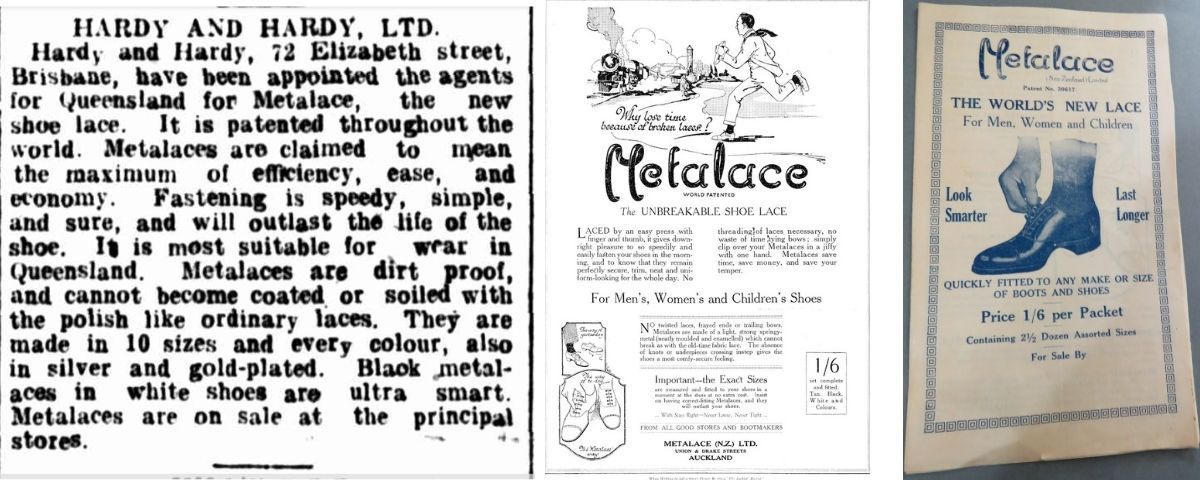Alison Sofield - Collections Volunteer
Around 3500 B C foot coverings made of animal skin, held on by a thin piece of leather threaded through slits in the hide, was the customary footwear of the time. So shoelaces in some form or other have existed for a long time as a way of holding the shoe firmly in place. Although laces have been around for a very long time, it is an Englishman, Harvey Kennedy who is credited with being the inventor of shoelaces. He took out a patent for his laces in 1790. The Museum of London has examples of medieval footwear dating back to the 12th century, clearly showing the lacing passing through a series of eyelets or hooks down the front of the shoe ending on a knot. An interesting fact is that the Knights Templar banned the wearing of shoelaces as a vanity that was “abominable and pagan”.
There is a myth that Gurkha soldiers, fighting for Britain, crawled along the ground feeling the laces of the soldiers they encountered. British soldiers favoured straight or bar lacing, while Japanese troops always used criss cross lacing. A matter of life or death.
Typically, shoelaces consist of a pair of strings or cords, one for each shoe or boot. The laces pass through a series of eyelets, loops, or hooks on either side of the shoe. To make threading easier manufacturers coated the end of laces with a stiffener or a metal clip.
Where am I going with this? Man being an ingenious beast could always find a better and more efficient way to do things. We all know about the joys of Velcro to get our children to do up their own shoes and zips make boots in particular easier to manage.
Over the centuries, there have been curious shoe fastening inventions. The Whangarei Museum holds one such curious item. A large box containing metal shoe ties, in both black and brown and in several sizes, branded as “Metalace Shoe Ties”, manufactured by Metalace N. Z. Ltd, Union and Drake Street, Auckland in the 1920s. Various compartments in the box hold sizes 10 to 20 ties priced at 1/6 per packet, suitable for both shoes and boots. Also enclosed is a handy pamphlet of instruction. It seems unlikely that these items were hot sellers, the need to crimp one end of the ties with a pair of pliers would have put many users off.
These quaint little pieces of metal, showing how they are used on a pair of Victorian style boots are on temporary display in the Exhibition Hall of the Museum. The desired effect was that the shoes or boots appeared more stylish than with laces.
Appearance is everything apparently.
